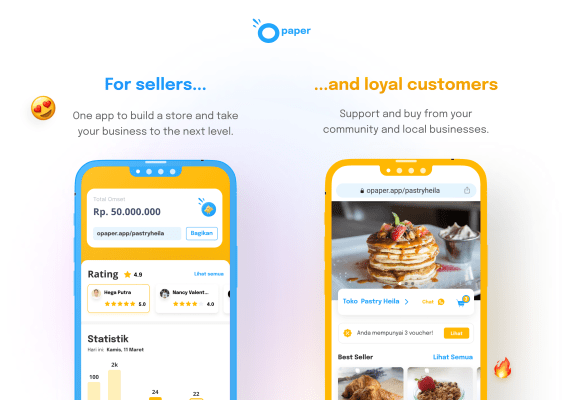Opaper takes the friction out of social commerce – TechCrunch
While working her way through grad school, Opaper founder Joan McIntosh ran an online bakery. “I would wake up at 3AM, 4AM, go to a commercial kitchen and go door to door, delivering food or putting it in grocery stores.” After graduating, McIntosh’s professional life became decidedly more high tech—she was senior product manager for data and machine learning platforms at Streetlight Data and then Lacuna Technologies. On a return trip to Southeast Asia (McIntosh was born and raised in Indonesia), she observed the rise of social commerce, or people selling through social media like Instagram and WhatsApp, and was surprised to see it was similar to all the manual work she had put into her online bakery years earlier.
“Everything was the same with how I did it,” McIntosh said. “I was just so baffled after working in tech for so many years, like why has nobody improved the process? Why is it still very manual? Why are you sending sellers payment, and then proof of payment like screenshots of bank transfers?”
While at Streetlight Data and Lacuna, McIntosh worked on products that optimized pricing, logistics and the supply chain, or “making sure that things are moving the right way, at the right speed, at the right cadence,” she said. Opaper was launched to give social commerce sellers the same type of convenience. After building a minimum viable product that allows social commerce sellers to create an online store, Opaper started onboarding users and raised an oversubscribed seed round of $1 million.
Investors include Precursor Ventures, Ratio Ventures, OnDeck, and angel investors Jay Eum, managing partner of GFT Ventures; Bora Chung, chief experience officer at Bill.com and Frank Nawabi, executive at Google and founder of Google-acquired Tenor, last year. Then it built a fully-remote team of 27 people in less than a year.
Now Opaper is available on Android and iOS and just four months after launching, has almost 19,000 sellers in 100 cities onboarded.
It targets small vendors, usually one or two people, who are at the point where they have about $2,000 to $5,000 USD gross merchandise value and want to scale, but can’t because they are busy answering questions and taking orders through WhatsApp. “They need time to focus on their product and think about how they can have an offline stores or maybe how to do franchises,” said McIntosh. “Those are the types of customers that we get to focus on more and more these days. It’s not somebody who already has three outlets. It’s somebody who has already started and is screaming ‘how to scale, how to scale?’”
While Opaper isn’t targeted to any particular sector, McIntosh said the majority of the businesses it works with are food and beverage companies, including ones that want to avoid the high commissions of third-party delivery apps. Opaper is integrated with 13 different shipping carriers that sellers can offer to their buyers, as well as e-wallets and bank transfers for payments.
For customers, Opaper means they don’t have to message back-and-forth with sellers, picking what goods they want, arranging payment and delivery. Instead, they go to the Opaper link in the seller’s profile and add things to a basket like any other online store. But Opaper doesn’t just make it easier for people to order goods on social media. It also lets sellers “own the direct to consumer experience,” McIntosh said.
Opaper lets seller keep track of that kind of customer data, so they can use it for re-engagement and re-targeting. Overtime, it also plans to build more supply chain and inventory management tools for sellers, since many social commerce sales are pre-orders. “When I was a bakery owner, I wanted to make sure I knew how much a person was buying so I could retarget them with coupons or loyalty points. It’s something you don’t really get easily from [third-party] marketplaces,” she said.




